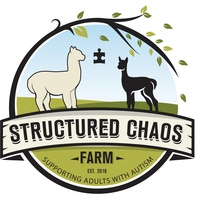Alpaca Research
Due to the fact that camelids are not an important source of food or clothing in the US, Canada or Europe as they are in South America, nor are they used for transport of goods and security as in the Middle East and India, studies aimed at improving health and productivity of camelids in the US, Canada and Europe are largely supported by owners and breeders. Donations by owners and breeders to funding organizations that are prepared to critically review applications and monitor progress are a key element in our ability to conduct competitive research that will benefit camelids and meet the requirements for publication in a peer reviewed scientific journal. By contrast to the US, Canada and Europe, in the Middle East, India and in Peru, where camelids are a major part of the economy, government agencies are more involved in funding camelid research.
Notably, two major areas of research. namely the comparative mapping of the alpaca genome and the development of single domain antibodies or nanobodies, have attracted government funding in the US, Canada and Europe due to their important potential applications to deciphering the function of the human genome and providing stable targeted treatment options for serious human diseases respectively. The increased funding available for these projects, due to their link to human disease, should reap future benefits for alpaca owners and breeders.
The elements of a successful camelid research effort can be broken down into three major parts, institutions that actually do the research, institutions that critically review, fund and monitor the progress of research and those that attempt to bring the information gleaned from these studies to camelid owners and breeders. There is often some overlap. Some researchers and organizations that fund research, such as Alpaca Research Foundation and Morris Animal Foundation also try to present results to owners and breeders. Further, some funding agencies such as NIH have in-house research facilities.
January 12, 2019
